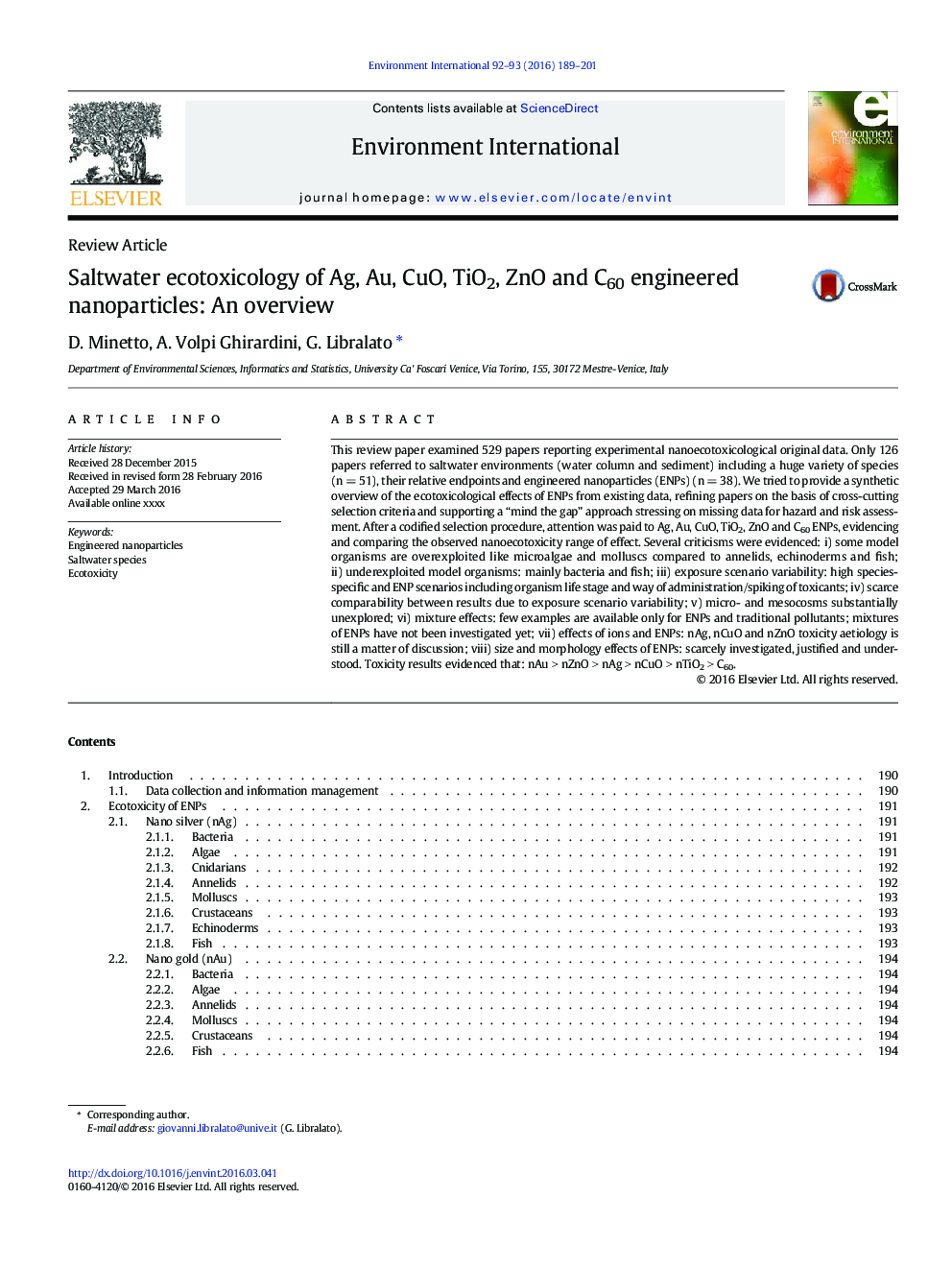| Article ID | Journal | Published Year | Pages | File Type |
|---|---|---|---|---|
| 6312974 | Environment International | 2016 | 13 Pages |
Abstract
This review paper examined 529 papers reporting experimental nanoecotoxicological original data. Only 126 papers referred to saltwater environments (water column and sediment) including a huge variety of species (n = 51), their relative endpoints and engineered nanoparticles (ENPs) (n = 38). We tried to provide a synthetic overview of the ecotoxicological effects of ENPs from existing data, refining papers on the basis of cross-cutting selection criteria and supporting a “mind the gap” approach stressing on missing data for hazard and risk assessment. After a codified selection procedure, attention was paid to Ag, Au, CuO, TiO2, ZnO and C60 ENPs, evidencing and comparing the observed nanoecotoxicity range of effect. Several criticisms were evidenced: i) some model organisms are overexploited like microalgae and molluscs compared to annelids, echinoderms and fish; ii) underexploited model organisms: mainly bacteria and fish; iii) exposure scenario variability: high species-specific and ENP scenarios including organism life stage and way of administration/spiking of toxicants; iv) scarce comparability between results due to exposure scenario variability; v) micro- and mesocosms substantially unexplored; vi) mixture effects: few examples are available only for ENPs and traditional pollutants; mixtures of ENPs have not been investigated yet; vii) effects of ions and ENPs: nAg, nCuO and nZnO toxicity aetiology is still a matter of discussion; viii) size and morphology effects of ENPs: scarcely investigated, justified and understood. Toxicity results evidenced that: nAu > nZnO > nAg > nCuO > nTiO2 > C60.
Keywords
Related Topics
Life Sciences
Environmental Science
Environmental Chemistry
Authors
D. Minetto, A. Volpi Ghirardini, G. Libralato,
